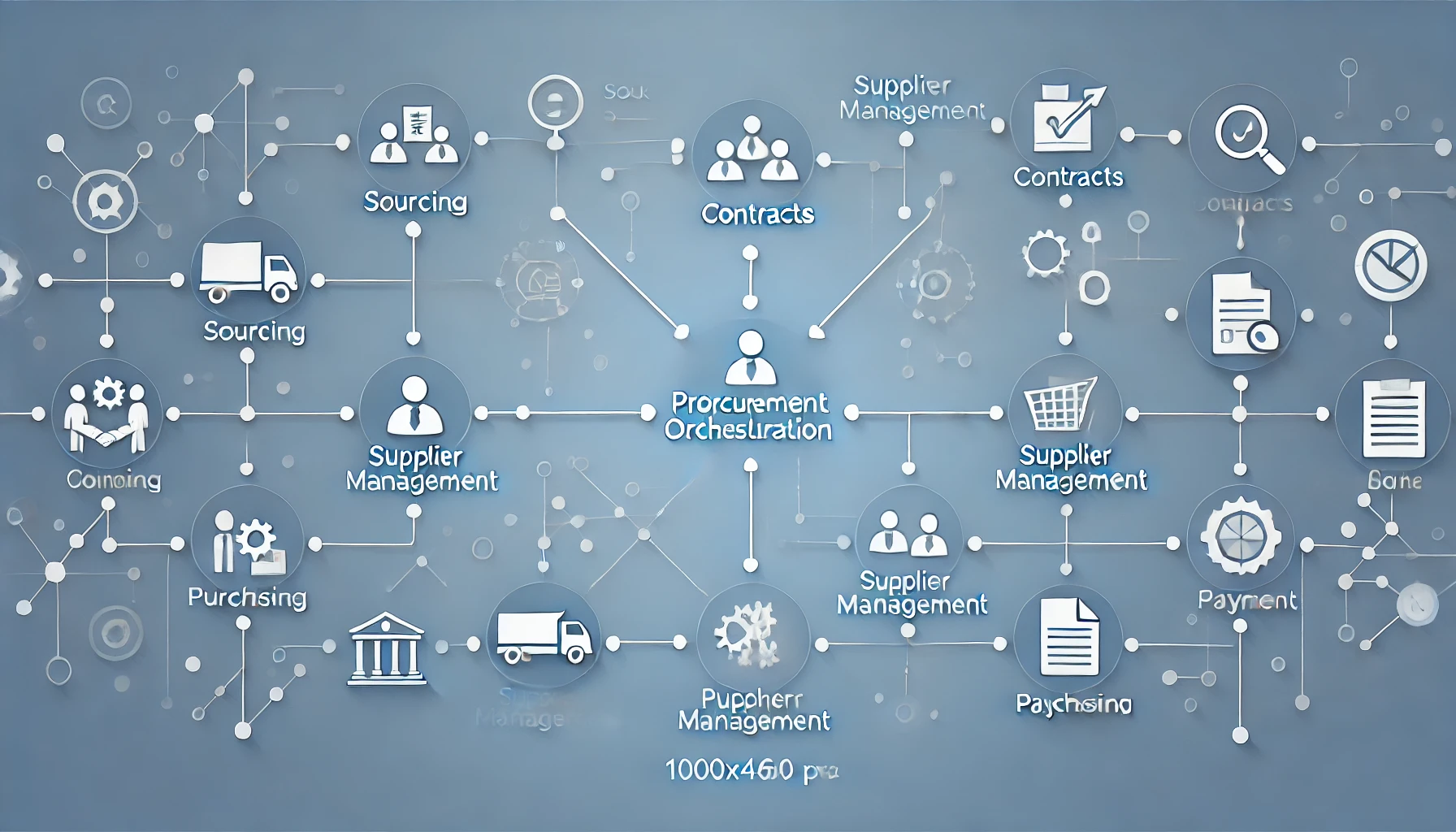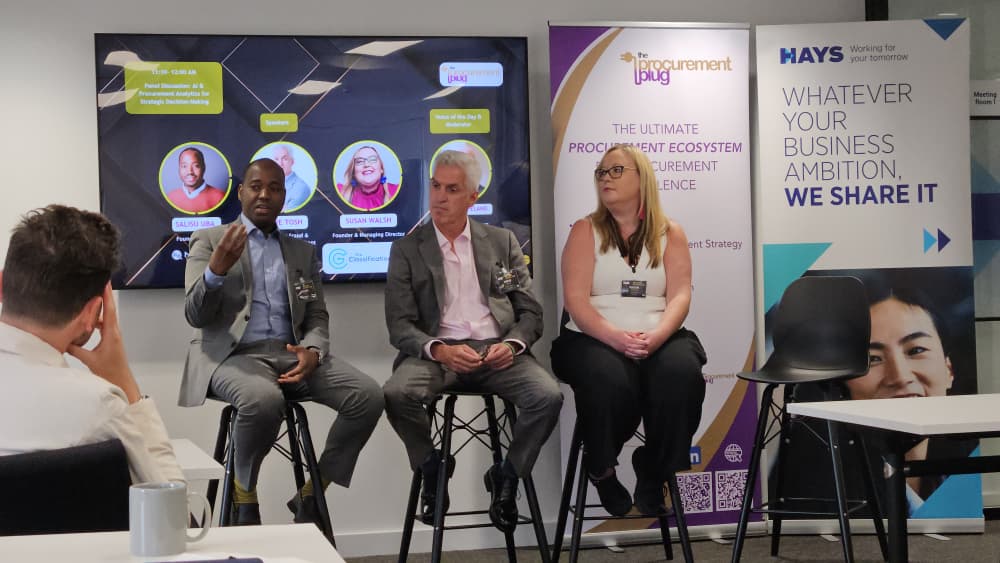NatQuest SCM Team – 26 March 2025
In large enterprises, procurement teams face increasing pressure to deliver cost savings, reduce risk, ensure compliance, and support sustainability—all while navigating an increasingly complex technology landscape. Yet in many organisations, procurement activities remain fragmented. The tools and systems that support sourcing, contracting, purchasing, and payment often operate in silos, with limited integration, minimal oversight, and no single point of accountability.
Procurement orchestration has emerged as a response to these structural inefficiencies. It represents a shift from isolated process optimisation to a cohesive, end-to-end coordination model. By introducing a centralised control layer that connects systems, standardises workflows, and embeds governance into daily operations, procurement orchestration enables more intelligent, agile, and compliant procurement delivery.
This expert opinion explains the concept in depth, outlines the technologies that enable it, maps the process architecture, and examines its impact through real-world examples.
Traditionally, procurement organisations focused on automation within discrete functions—e-sourcing, contract management, invoice processing, and supplier onboarding. These initiatives often brought efficiency gains at the local level but failed to address broader challenges:
- Fragmented data that limits analytics and decision support
- Process handoffs that introduce delays and risk
- Compliance gaps that expose the business to audit or reputational issues
- Over-reliance on manual interventions to resolve routine tasks
Procurement orchestration addresses these issues at a structural level. It introduces a layer of logic, control, and connectivity that sits above existing systems and aligns them around clearly defined workflows. The orchestrator doesn’t replace existing tools—it connects and coordinates them, providing a unified experience for internal stakeholders, procurement professionals, and suppliers.

Conceptual Foundation
At its core, procurement orchestration is built around three principles:
- End-to-End Process Visibility
All procurement activities—regardless of tool, geography, or business unit—are visible in real-time and governed by defined workflows. - Integrated Execution
Systems talk to each other through APIs or connectors. When one process ends (e.g., contract signing), the next begins automatically (e.g., PO creation). - Embedded Governance
Policies are enforced not as afterthoughts but as embedded logic. Spend limits, risk rules, and compliance checks are built into the workflow.
The result is a procurement function that is not only automated, but orchestrated—coherent, predictable, and resilient.
Technology Architecture
Procurement orchestration is made possible through a convergence of enabling technologies:
| Technology | Function |
|---|---|
| API Frameworks | Connects existing platforms (ERP, CLM, sourcing, supplier portals) |
| Workflow Automation | Manages business rules, approvals, task routing |
| RPA (Robotic Process Automation) | Automates repetitive, rule-based tasks (e.g., invoice matching) |
| Low-Code Platforms | Allows rapid deployment of workflows without custom coding |
| AI/ML Engines | Supports risk scoring, supplier recommendations, and predictive analytics |
| Procurement Control Towers | Central dashboards for monitoring process status and performance KPIs |
A well-orchestrated procurement architecture enables standardised process execution, seamless handoffs, and complete auditability.
Functional Architecture and Process Design
The orchestration model overlays the full source-to-pay cycle, aligning each stage of the process into a single managed flow. Below is a simplified orchestration framework:
1. Intake and Qualification
- Users submit procurement requests through a unified intake portal.
- Requests are categorised by type, value, and urgency.
- System routes to the appropriate process: spot buy, catalogue order, RFx, or framework agreement.
2. Sourcing and Supplier Evaluation
- If sourcing is required, the orchestrator triggers an event in the e-sourcing tool.
- Supplier responses are captured, scored, and reviewed.
- Risk assessments and ESG checks are pulled from third-party platforms and integrated into the workflow.
3. Contract Lifecycle Management
- Drafting initiated via integrated CLM platform.
- Standard templates and clause libraries are applied.
- Reviews and approvals are automated with e-signature and version control.
- Finalised contract is stored centrally with metadata tagged for future reporting.
4. Ordering and Fulfilment
- Contract terms flow into the ERP system for PO generation.
- Supplier receives PO via portal or EDI.
- Fulfilment status is tracked in real-time, including delivery confirmations and exception alerts.
5. Invoicing and Payment
- Three-way match between PO, receipt, and invoice conducted automatically.
- Exceptions routed to designated approvers.
- Payment instructions sent to finance; transaction data archived for audit.
6. Supplier Performance and Feedback
- Ongoing monitoring of delivery, quality, cost adherence, and service levels.
- Supplier scorecards updated automatically.
- Poor performance triggers escalation workflows or corrective actions.
This level of control improves not just operational efficiency, but also supplier collaboration and stakeholder satisfaction.
Strategic Capabilities
The value of procurement orchestration extends beyond automation. It creates a foundation for strategic capability development across several dimensions:
| Capability | Strategic Impact |
|---|---|
| Governance by Design | Reduces policy breaches and audit risk by embedding rules into workflows |
| Standardisation at Scale | Harmonises procurement across geographies or business units |
| Speed and Agility | Reduces cycle times and allows rapid response to business needs |
| Informed Decision-Making | Real-time data from multiple systems supports better sourcing strategies |
| Talent Optimisation | Reduces manual workload, enabling procurement staff to focus on value-adding activities |
| Cross-Functional Alignment | Improves collaboration between procurement, finance, legal, and operations |
Implementation Considerations
Before deploying an orchestration layer, organisations should:
- Map current-state processes
Identify inefficiencies, delays, and compliance gaps. - Engage stakeholders early
Co-design workflows with input from procurement, finance, legal, and IT. - Define governance parameters
Determine which policies, limits, and thresholds will be enforced through automation. - Start with high-value or high-risk categories
Focus orchestration on areas where inconsistency is most costly. - Select the right orchestration platform
Look for modularity, integration flexibility, and ease of use. - Monitor and adapt continuously
Use data to refine workflows and improve over time.
Procurement orchestration is not just a digital solution—it is a shift in how procurement operates. It aligns people, process, and technology to support strategic goals: risk reduction, cost control, speed to market, and improved supplier engagement. By making procurement more structured, accountable, and data-driven, orchestration strengthens procurement’s position as a business enabler.
Organisations that invest in orchestration today are better positioned to absorb future disruption—whether geopolitical, environmental, or technological—and to lead transformation efforts with confidence.
NatQuest and SCM Genius Network offers
For organisations looking to operationalise procurement orchestration without overhauling their existing infrastructure, NatQuest offers a pragmatic and scalable approach through its SCM Genius Network.
Organisations seeking to move towards intelligent procurement orchestration can leverage SCM Genius to achieve measurable improvements in operational efficiency, risk control, and stakeholder satisfaction—without undertaking large-scale system replacement projects.
Contact us hello@nat-quest.com





